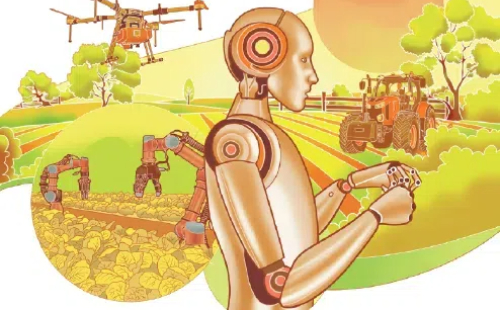Agricultural progress puts nation on solid footing
Spending rises
Spending on agriculture by the Chinese government rose from 235.8 billion yuan in 2004 to 2.1 trillion yuan in 2019.
As a result, damage to crop-growing areas from natural disasters during this period fell by 48.1 percent, while the contribution of scientific and technological progress to agricultural output rose from 45 percent to 59.2 percent, according to the National Development and Reform Commission and the Ministry of Agriculture and Rural Affairs.
At the same time, farming, livestock and fisheries production increased significantly.
The experts noted that China launched its economic reforms in 1978 by first turning to agriculture. The nation dismantled its commune system of landholdings and also liberated agricultural markets, allowing farmers to get much higher prices for their produce.
Ashok Gulati, a noted Indian agricultural economist who has visited China many times since the 1980s, said that in the six years from 1978, Chinese farmers' incomes rose by nearly 14 percent annually, more than doubling during this time and triggering reforms in other sectors.
A report prepared by Gulati and another Indian scholar, Prerna Terway, shows that in 2019, China's agricultural output stood at $1.37 trillion, compared with $407 billion for India. China has also invested heavily in research and development related to farming practices.
Gulati said China's agricultural output is three times that of India and comes from a smaller arable area-119 million hectares compared with India's 156 million hectares.
From 1978 to 2002, China's agricultural growth nearly doubled that from 1966 to 1977. This was the main reason poverty affected just 3 percent of the population in 2001, down from 33 percent in 1978, according to a report published by Gulati and Chinese agricultural scholar Shenggen Fan in 2008 in the Indian publication Economic and Political Weekly.
Fan and Gulati were both associated with the International Food Policy Research Institute at that time.
They said in the report: "By making agriculture-a sector which gives the majority of people their livelihoods-the starting point of market-oriented reforms, China could ensure widespread distribution of grain and build consensus and political support for the continuation of reforms.
"Reform of incentives resulted in greater returns for farmers and in more efficient resource allocation, which in turn strengthened the domestic production base and made it more competitive."
Saikiran Kannan, a columnist and analyst who visited China in 2014, said another important reason for the nation's greater efficiency and diversity in its agricultural practices is that farmers have the incentive to grow different crops based on the type of land used and the season.
China's highly advanced e-commerce sector has also enabled the nation's farmers to sell their produce directly to consumers worldwide, while community supported agriculture enables purchases to be made directly from a farmer or a group of farmers, Kannan said.
According to the UN Food and Agricultural Organization, or FAO, China has succeeded in producing 25 percent of the world's grain and feeding 20 percent of the global population from less than 10 percent of the world's arable land, which it said is a great achievement.
The nation ranks first in the world for production of cereals, cotton, fruit, vegetables, meat, poultry, eggs and fishery products, and in providing assistance to other developing countries to support local agricultural development, the FAO said.
Digital technologies have enabled Chinese farmers to better equip themselves to face new challenges and to make their businesses more profitable and efficient, experts said.
Sudheendra Kulkarni, who served as an aide to former Indian prime minister Atal Bihari Vajpayee from 1998 to 2004, said that since pro-market economic reforms were introduced in the late 1970s, China has freed 800 million people from poverty.
Kulkarni is also founder of the Forum for a New South Asia, which champions a peaceful and prosperous South Asian subcontinent based on cooperation between China, India and Pakistan.





 play
play